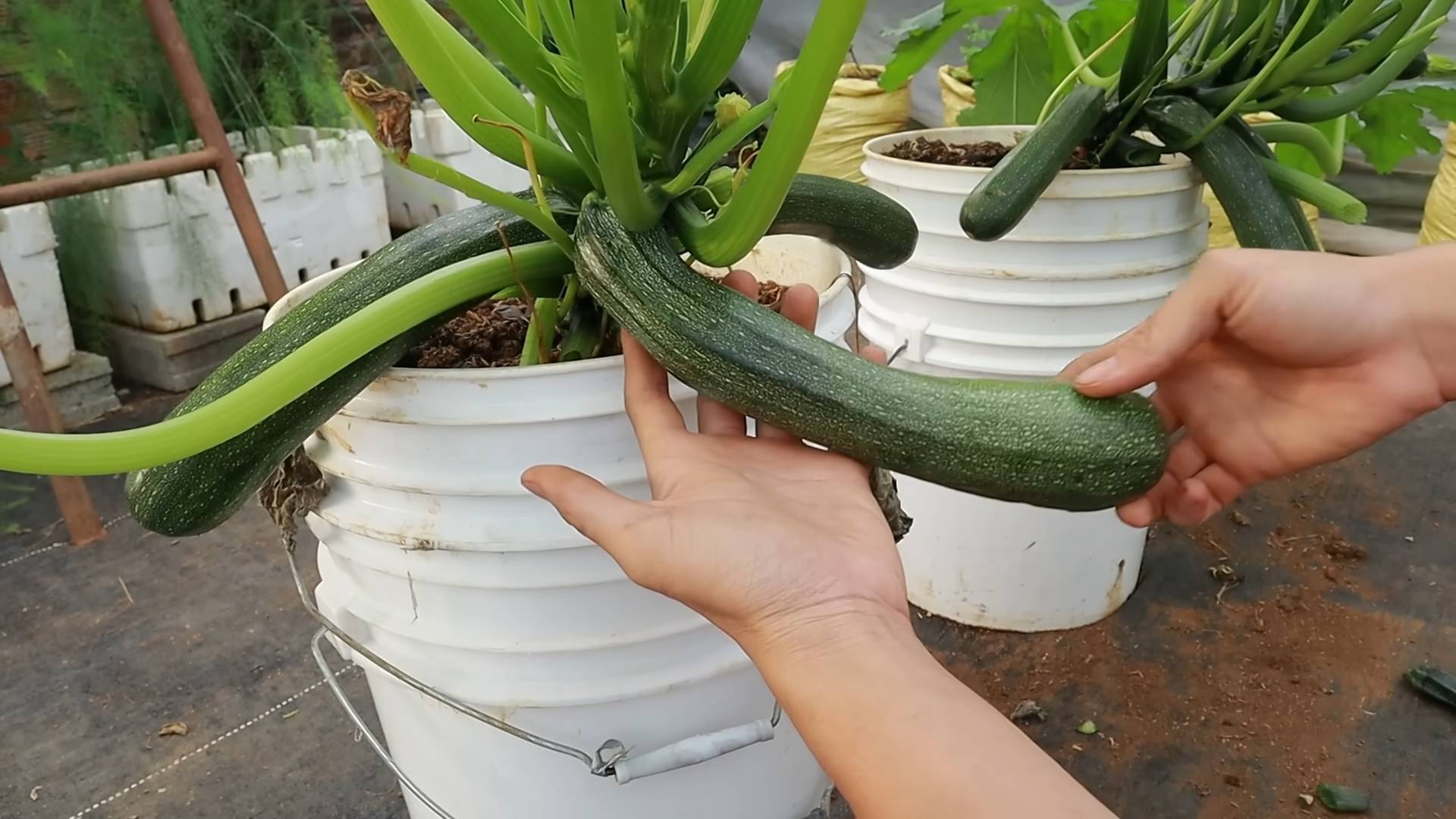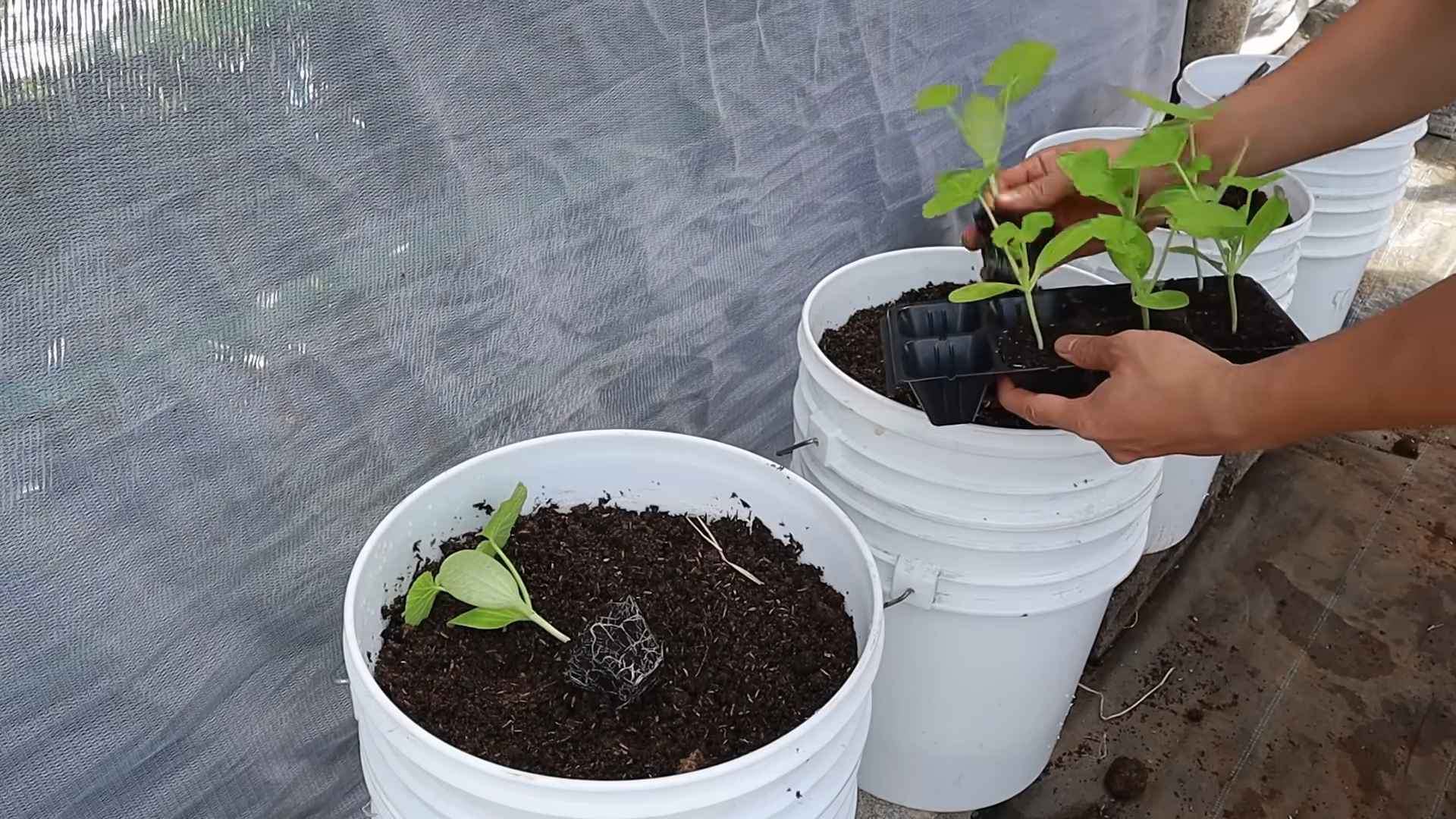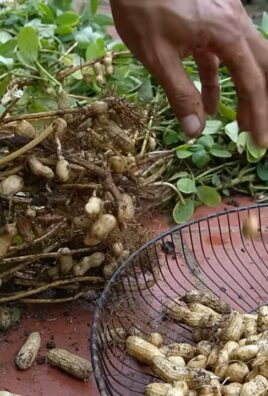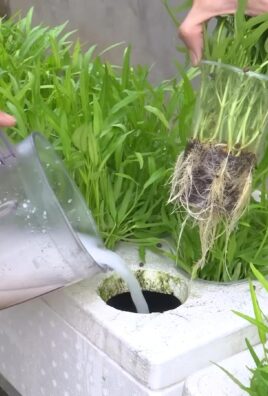Growing Zucchini Indoors Outdoors might seem like a challenge, but trust me, it’s more achievable (and rewarding!) than you think. Have you ever dreamt of harvesting fresh, vibrant zucchini right from your own home, regardless of the season or your garden’s size? I know I have! For centuries, cultivating vegetables has been a cornerstone of self-sufficiency and a connection to the earth. From ancient civilizations nurturing crops in enclosed spaces to modern urban gardeners maximizing their balconies, the desire to grow our own food is deeply ingrained.
But let’s face it, not everyone has the luxury of a sprawling outdoor garden. That’s where these DIY tricks and hacks come in. Growing Zucchini Indoors Outdoors opens up a world of possibilities, allowing you to enjoy this versatile vegetable even if you’re short on space or battling unpredictable weather. Imagine the satisfaction of adding homegrown zucchini to your favorite recipes, knowing you nurtured it from seed to table. This article is packed with simple, effective techniques to help you successfully cultivate zucchini, whether you’re a seasoned gardener or just starting out. Get ready to unleash your inner green thumb and enjoy a bountiful harvest!

Growing Zucchini: From Seed to Table, Indoors and Out!
Okay, zucchini lovers, let’s dive into the wonderful world of growing these prolific veggies! Whether you’re dealing with limited outdoor space or just want a head start on the season, I’m going to walk you through everything you need to know to successfully grow zucchini, both indoors and outdoors. Get ready for a zucchini bonanza!
Choosing Your Zucchini Variety
First things first, let’s talk varieties. Not all zucchini are created equal, and some are better suited for container growing than others. Here are a few of my favorites:
* Black Beauty: A classic, reliable variety with dark green, almost black skin. It’s a heavy producer and relatively compact.
* Early Crookneck: If you’re looking for something a little different, this yellow zucchini has a curved neck and a slightly sweeter flavor.
* Spacemiser: As the name suggests, this is a bush-type zucchini that’s perfect for containers. It produces a good yield in a small space.
* Costata Romanesco: An Italian heirloom with distinctive ridges and a nutty flavor. It’s a bit more vigorous than some other varieties, so make sure you have a large enough container.
* Golden Zucchini: A bright yellow zucchini that adds a pop of color to your garden and your plate.
Starting Zucchini Seeds Indoors (Optional)
Starting seeds indoors gives you a head start, especially if you live in a cooler climate. I usually start mine about 3-4 weeks before the last expected frost.
Materials You’ll Need:
* Zucchini seeds
* Seed starting trays or small pots (at least 3-4 inches in diameter)
* Seed starting mix (a light, well-draining mix is essential)
* Watering can or spray bottle
* Heat mat (optional, but helpful for germination)
* Grow lights (essential if you don’t have a very sunny windowsill)
Step-by-Step Instructions:
1. Prepare Your Seed Starting Trays: Fill your seed starting trays or pots with seed starting mix. Gently tap the trays to settle the mix.
2. Sow the Seeds: Make a small hole (about 1 inch deep) in the center of each cell or pot. Place one or two zucchini seeds in each hole. I usually plant two, just in case one doesn’t germinate.
3. Cover the Seeds: Gently cover the seeds with seed starting mix and lightly water the soil. You want the soil to be moist, but not soggy.
4. Provide Warmth and Light: Place the seed starting trays on a heat mat (if using) and under grow lights. If you’re using a windowsill, make sure it gets at least 6 hours of direct sunlight per day.
5. Keep the Soil Moist: Check the soil moisture daily and water as needed to keep it consistently moist. Don’t let it dry out completely.
6. Thin Seedlings (If Necessary): Once the seedlings emerge (usually within 7-10 days), thin them to one seedling per cell or pot. Choose the strongest, healthiest-looking seedling and snip off the other at the soil line.
7. Harden Off Seedlings: About a week before you plan to transplant your seedlings outdoors, you’ll need to “harden them off.” This means gradually exposing them to outdoor conditions to help them adjust. Start by placing them outside for an hour or two each day, gradually increasing the amount of time they spend outdoors. Protect them from strong winds and direct sunlight at first.
Growing Zucchini in Containers (Indoors or Outdoors)
Container gardening is a great option if you have limited space or want to control the growing environment.
Choosing the Right Container:
Zucchini plants need plenty of room to grow, so choose a large container. I recommend a container that’s at least 24 inches in diameter and 24 inches deep. Make sure the container has drainage holes to prevent waterlogging.
Soil Preparation:
Use a high-quality potting mix that’s rich in organic matter. You can also amend the soil with compost or aged manure to provide extra nutrients. I like to add a slow-release fertilizer to the potting mix as well.
Transplanting Seedlings (or Direct Sowing):
1. Transplanting: If you started your seeds indoors, gently remove the seedlings from their seed starting trays or pots. Dig a hole in the center of your container that’s large enough to accommodate the root ball. Place the seedling in the hole and gently backfill with potting mix. Water thoroughly.
2. Direct Sowing: If you’re direct sowing, plant 2-3 seeds per container, about 1 inch deep. Once the seedlings emerge, thin them to one plant per container.
Caring for Your Container Zucchini:
* Sunlight: Zucchini plants need at least 6-8 hours of direct sunlight per day. Place your container in a sunny location.
* Watering: Water your zucchini plants regularly, especially during hot, dry weather. The soil should be consistently moist, but not soggy. Check the soil moisture daily and water when the top inch feels dry.
* Fertilizing: Zucchini plants are heavy feeders, so fertilize them regularly with a balanced fertilizer. I like to use a liquid fertilizer every 2-3 weeks.
* Pollination: Zucchini plants have separate male and female flowers. The female flowers need to be pollinated in order to produce fruit. If you’re growing zucchini indoors, you may need to hand-pollinate the flowers. To do this, use a small paintbrush to transfer pollen from the male flowers to the female flowers. You can identify female flowers by the small zucchini fruit that forms at the base of the flower.
* Pest Control: Keep an eye out for pests such as squash bugs, squash vine borers, and aphids. You can control these pests with insecticidal soap or neem oil.
* Support: As the zucchini plant grows, it may need some support. You can use a stake or trellis to help support the plant and keep the fruit off the ground.
Growing Zucchini Outdoors in the Ground
If you have the space, growing zucchini directly in the ground is a great option.
Choosing a Location:
Select a location that gets at least 6-8 hours of direct sunlight per day. The soil should be well-draining and rich in organic matter.
Soil Preparation:
Amend the soil with compost or aged manure to improve drainage and fertility. You can also add a slow-release fertilizer to the soil.
Planting:
1. Direct Sowing: Sow zucchini seeds directly in the ground after the last expected frost. Plant the seeds about 1 inch deep and space them 2-3 feet apart.
2. Transplanting: If you started your seeds indoors, transplant the seedlings after the last expected frost. Dig a hole that’s large enough to accommodate the root ball. Place the seedling in the hole and gently backfill with soil. Space the plants 2-3 feet apart.
Caring for Your Zucchini Plants:
* Watering: Water your zucchini plants regularly, especially during hot, dry weather. The soil should be consistently moist, but not soggy.
* Fertilizing: Fertilize your zucchini plants regularly with a balanced fertilizer. I like to side-dress the plants with compost or aged manure every few weeks.
* Pollination: As with container-grown zucchini, outdoor zucchini plants need to be pollinated in order to produce fruit. Bees and other pollinators usually take care of this, but if you’re not seeing much fruit set, you may need to hand-pollinate the flowers.
* Pest Control: Keep an eye out for pests such as squash bugs, squash vine borers, and aphids. You can control these pests with insecticidal soap or neem oil.
* Weeding: Keep the area around your zucchini plants free of weeds. Weeds can compete with the plants for nutrients and water.
* Mulching: Mulch around your zucchini plants with straw or wood chips to help retain moisture and suppress weeds.
Harvesting Zucchini
Zucchini grows quickly, so check your plants regularly for ripe fruit. The best time to harvest zucchini is when they’re young and tender, usually when they’re about 6-8 inches long. Use a sharp knife to cut the zucchini from the plant, leaving a short stem attached. Overgrown zucchini can become tough and seedy.
Tips for Harvesting:
* Harvest zucchini frequently to encourage more production.
* Wear gloves when harvesting zucchini, as the leaves can be prickly.
* Store zucchini in the refrigerator for up to a week.
Troubleshooting
Even with the best care, you may encounter some problems when growing zucchini. Here are a few common issues and how to address them:
* Powdery Mildew: This fungal disease can cause

Conclusion
So, there you have it! Growing zucchini, whether indoors or outdoors, doesn’t have to be a daunting task. With a little planning, the right techniques, and a dash of patience, you can enjoy a bountiful harvest of this versatile vegetable right from your own home. We’ve explored the nuances of both indoor and outdoor cultivation, highlighting the specific needs and advantages of each method.
The real beauty of this DIY project lies in its adaptability. Feel free to experiment with different zucchini varieties. Try growing classic green zucchini, or branch out with yellow varieties like ‘Golden Zucchini’ or even round types like ‘Eight Ball.’ Each offers a unique flavor and texture to your culinary creations.
Consider companion planting to enhance your zucchini’s growth and deter pests. Marigolds, nasturtiums, and basil are excellent choices for outdoor gardens, while dill and parsley can thrive alongside indoor zucchini plants. These companions not only add beauty to your garden but also provide natural pest control and attract beneficial insects.
Don’t be afraid to get creative with your growing setup. If you’re short on space, try vertical gardening techniques using trellises or cages to support your zucchini plants. This is especially helpful for indoor growing, where space is often limited.
Remember, consistent watering and fertilization are key to success. Monitor your plants regularly for signs of pests or diseases, and take action promptly to prevent problems from escalating. With a little attention and care, you’ll be rewarded with a steady supply of fresh, delicious zucchini throughout the growing season.
Ultimately, the best way to learn is by doing. So, grab some seeds, prepare your soil, and embark on your own zucchini-growing adventure. Whether you choose to cultivate your zucchini indoors or outdoors, we’re confident that you’ll find the experience both rewarding and enjoyable.
We encourage you to try this DIY trick and share your experiences with us! Let us know what varieties you’re growing, what challenges you’ve encountered, and what successes you’ve celebrated. Your insights can help other gardeners learn and grow, too. Share your photos and stories on social media using #DIYZucchiniGarden. We can’t wait to see what you create!
Frequently Asked Questions (FAQ)
Q: What are the best zucchini varieties for growing indoors?
A: While most zucchini varieties can be grown indoors with sufficient light and space, bush varieties tend to be more manageable. Consider compact varieties like ‘Spacemiser,’ ‘Bush Baby,’ or ‘Astia.’ These varieties are bred to be smaller and more contained, making them ideal for indoor containers. They also tend to produce fruit earlier than vining varieties, which is a bonus for indoor gardeners eager to harvest their own zucchini. Remember to provide adequate support, even for bush varieties, as the fruits can become quite heavy.
Q: How much sunlight does zucchini need, both indoors and outdoors?
A: Zucchini plants are sun-loving vegetables and require at least 6-8 hours of direct sunlight per day to thrive. Outdoors, choose a location that receives full sun throughout the day. Indoors, supplement natural light with grow lights if necessary. LED grow lights are a great option as they are energy-efficient and provide the full spectrum of light that plants need. Position the grow lights close to the plants (but not touching them) and adjust the height as the plants grow. Insufficient light can lead to leggy growth, reduced fruit production, and increased susceptibility to pests and diseases.
Q: What type of soil is best for growing zucchini?
A: Zucchini plants prefer well-draining, fertile soil that is rich in organic matter. Whether you’re growing indoors or outdoors, amend your soil with compost or well-rotted manure to improve its structure and nutrient content. For container gardening, use a high-quality potting mix that is specifically formulated for vegetables. Avoid using garden soil in containers, as it can become compacted and poorly drained. A slightly acidic to neutral pH (6.0-7.5) is ideal for zucchini growth.
Q: How often should I water my zucchini plants?
A: Zucchini plants need consistent moisture, especially during hot weather and fruit development. Water deeply whenever the top inch of soil feels dry to the touch. Avoid overhead watering, as this can promote fungal diseases. Instead, water at the base of the plant, using a soaker hose or drip irrigation system if possible. Indoor zucchini plants may require more frequent watering than outdoor plants, as containers tend to dry out more quickly. Check the soil moisture regularly and adjust your watering schedule accordingly.
Q: How do I pollinate zucchini flowers indoors?
A: Zucchini plants have separate male and female flowers. Outdoors, pollination is typically done by bees and other insects. Indoors, you’ll need to hand-pollinate the flowers to ensure fruit production. Identify the male and female flowers. The male flower has a long, thin stem, while the female flower has a small, immature zucchini fruit at the base. Use a small paintbrush or cotton swab to collect pollen from the male flower and transfer it to the stigma of the female flower. It’s best to do this in the morning when the flowers are open.
Q: What are some common pests and diseases that affect zucchini plants?
A: Common pests that can affect zucchini plants include squash bugs, squash vine borers, aphids, and spider mites. Diseases include powdery mildew, downy mildew, and blossom-end rot. Regularly inspect your plants for signs of pests or diseases and take action promptly. Use organic pest control methods such as insecticidal soap, neem oil, or diatomaceous earth. Ensure good air circulation to prevent fungal diseases. Blossom-end rot is caused by calcium deficiency, so amend your soil with calcium-rich amendments like bone meal or crushed eggshells.
Q: How do I know when my zucchini is ready to harvest?
A: Zucchini is typically harvested when it is young and tender, about 6-8 inches long. The skin should be smooth and glossy, and the flesh should be firm. Use a sharp knife to cut the zucchini from the plant, leaving a short stem attached. Overripe zucchini can become tough and seedy, so it’s best to harvest regularly to encourage continued production.
Q: Can I grow zucchini in a small container?
A: While zucchini plants can grow quite large, you can successfully grow them in containers as long as you choose a large enough pot. A 15-20 gallon container is recommended for each plant. Ensure that the container has drainage holes to prevent waterlogging. Choose a bush variety of zucchini for container gardening, as they tend to be more compact and manageable. Provide adequate support for the plant as it grows, using a trellis or cage.
Q: How can I prevent blossom-end rot in my zucchini?
A: Blossom-end rot is a common problem in zucchini, characterized by a dark, sunken spot on the blossom end of the fruit. It is caused by calcium deficiency, which can be due to insufficient calcium in the soil or inconsistent watering. To prevent blossom-end rot, amend your soil with calcium-rich amendments like bone meal or crushed eggshells. Ensure consistent watering, especially during hot weather. Avoid over-fertilizing with nitrogen, as this can interfere with calcium uptake.
Q: What are some creative ways to use my homegrown zucchini?
A: Zucchini is an incredibly versatile vegetable that can be used in a wide variety of dishes. You can grill it, sauté it, bake it, or even eat it raw. Try adding it to salads, soups, stews, and stir-fries. Zucchini bread and muffins are classic favorites. You can also shred zucchini and use it to make fritters, pancakes, or even zucchini noodles (zoodles). Don’t forget the blossoms! Zucchini blossoms can be stuffed, battered, and fried for a delicious and unique treat. Get creative and experiment with different recipes to discover your favorite ways to enjoy your homegrown zucchini.




Leave a Comment